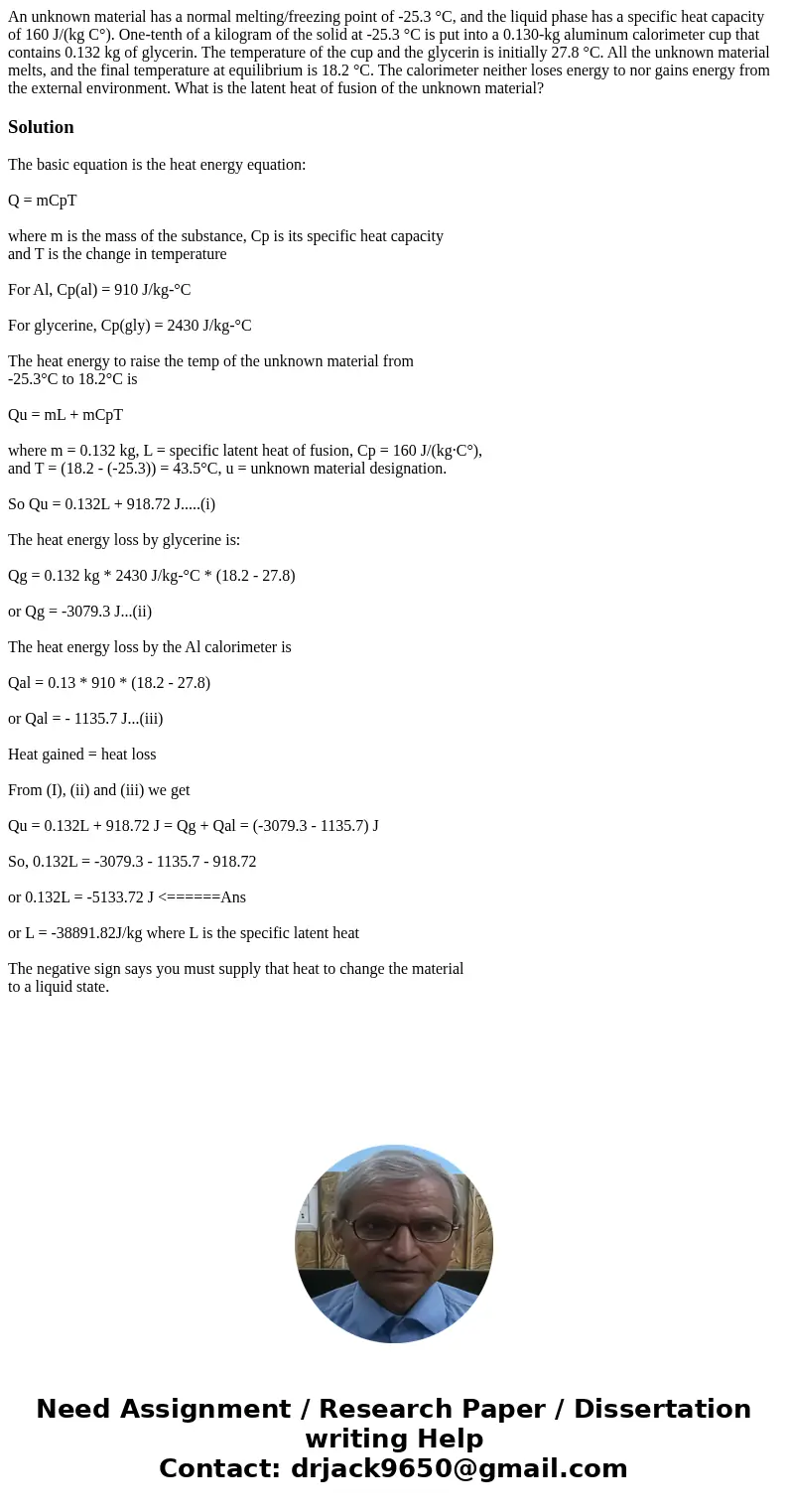An unknown material has a normal meltingfreezing point of 25
An unknown material has a normal melting/freezing point of -25.3 °C, and the liquid phase has a specific heat capacity of 160 J/(kg C°). One-tenth of a kilogram of the solid at -25.3 °C is put into a 0.130-kg aluminum calorimeter cup that contains 0.132 kg of glycerin. The temperature of the cup and the glycerin is initially 27.8 °C. All the unknown material melts, and the final temperature at equilibrium is 18.2 °C. The calorimeter neither loses energy to nor gains energy from the external environment. What is the latent heat of fusion of the unknown material?
Solution
The basic equation is the heat energy equation:
Q = mCpT
where m is the mass of the substance, Cp is its specific heat capacity
and T is the change in temperature
For Al, Cp(al) = 910 J/kg-°C
For glycerine, Cp(gly) = 2430 J/kg-°C
The heat energy to raise the temp of the unknown material from
-25.3°C to 18.2°C is
Qu = mL + mCpT
where m = 0.132 kg, L = specific latent heat of fusion, Cp = 160 J/(kg·C°),
and T = (18.2 - (-25.3)) = 43.5°C, u = unknown material designation.
So Qu = 0.132L + 918.72 J.....(i)
The heat energy loss by glycerine is:
Qg = 0.132 kg * 2430 J/kg-°C * (18.2 - 27.8)
or Qg = -3079.3 J...(ii)
The heat energy loss by the Al calorimeter is
Qal = 0.13 * 910 * (18.2 - 27.8)
or Qal = - 1135.7 J...(iii)
Heat gained = heat loss
From (I), (ii) and (iii) we get
Qu = 0.132L + 918.72 J = Qg + Qal = (-3079.3 - 1135.7) J
So, 0.132L = -3079.3 - 1135.7 - 918.72
or 0.132L = -5133.72 J <======Ans
or L = -38891.82J/kg where L is the specific latent heat
The negative sign says you must supply that heat to change the material
to a liquid state.

 Homework Sourse
Homework Sourse